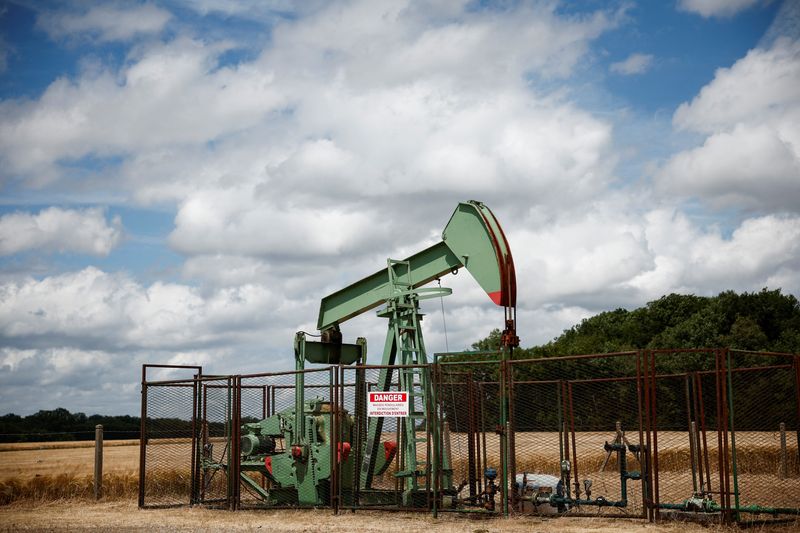By Florence Tan and Siyi Liu
SINGAPORE (Reuters) – Oil prices nudged higher on Friday and are on track for a weekly gain of more than 1%, as tensions in the world’s top oil-producing region, the Middle East, and a restart in Gaza ceasefire talks in the coming days kept traders on edge.
futures climbed 31 cents, or 0.4%, to $74.69 a barrel by 0642 GMT while U.S. West Texas Intermediate crude was at $70.48 a barrel, up 29 cents, or 0.4%.
“We remain of the view that the right price for currently is around $70 where it is now, as we await fresh price drivers, including the outcome of China’s NPC Standing Committee meeting as well as Israel’s response to Iran’s October 1 missile attack,” IG market analyst Tony Sycamore said in a note, referring to WTI prices.
Both benchmarks settled down 58 cents a barrel in the previous session after prices fluctuated against expectations of heightened or reduced tensions in the Middle East.
Oil traders are waiting for Israel’s response to a missile attack by Iran on Oct. 1 that may involve hitting Tehran’s oil infrastructure and disrupt supplies, although reports said Israel would strike Iranian military, not nuclear or oil, targets.
U.S. and Israeli officials are set to restart talks for a ceasefire and the release of hostages in Gaza in the coming days. Previous attempts to reach a deal have failed.
U.S. Secretary of State Antony Blinken said on Thursday that the United States does not want a protracted Israeli campaign in Lebanon, while France has called for a ceasefire and focus on diplomacy.
Ceasefire talks have a small net negative impact on oil prices, Sycamore said, adding the focus is more on the conflict in Lebanon and Israel’s potential response to Iran.
Investors are also eyeing more clarity on Beijing’s stimulus policies, although analysts do not expect such measures to provide a major boost to oil demand from China, the world’s No. 2 consumer.

Goldman Sachs on Thursday left its oil, , and coal price forecasts unchanged, estimating Chinese stimulus boosts to energy prices that are modest relative to bigger drivers such as oil supply from the Middle East and winter weather for natural gas.
It forecasts Brent in the $70 to $85 range for 2025.

